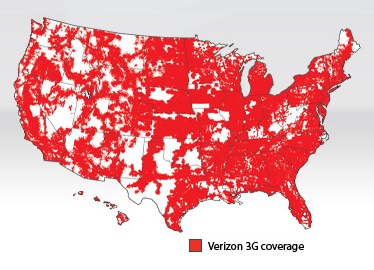Verizon: LTE's launch on the horizon; not worried about WiMax

Minutes after the CEOs of Sprint Nextel and Clearwire finished talking up WiMax on the keynote stage at CTIA Wireless, Verizon convened a panel to provide an update on LTE deployment.
There seems to be a consistent feeling that LTE is the queen of the ball here - and even Clearwire and Sprint execs acknowledged that LTE is a more powerful technology and that they, too, might eventually adopt it. But in the smaller session with Verizon execs, there was no real mention of WiMax. Verizon is committed to LTE and convinced that it was the right decision to take that 4G path. 
Here's the update: Look for 4G LTE networks to light up in 25-30 markets this year, as previously promised. Beyond that, the company is looking out another 15 months to double the number of markets. In fact, execs said that by 2013, the company's 4G coverage map looks a lot like the 3G coverage map that we see in the company's television commercials today - and, in fact, it should have even more red on it.
With that said, things are moving along. Getting the backhaul in place is challenging enough, but there's more to it with LTE. As an early entry player in LTE, Verizon says it has to do more than just build the pipeline. It also has to beef up the LTE ecosystem, as well, with devices, apps and other content.
Specifically, the panel focused on several initiatives to do this, including an open development community and a 4G venture forum.
The venture forum is an interesting approach because it bridges the investment community with the development community so that, upon launch of LTE, there's a there there. In such an ecosystem, there will be a number of small developers who might otherwise have a tough time grabbing the attention of investors.
The initiative that grabbed my attention was the development initiative that's working on building out a Vcast apps marketplace. Apps have become the hottest things on smartphones and, as they've grown in popularity, so have the number of apps marketplaces. I asked Verizon whether we can have too many marketplaces, whether partners - notably, the OS platform folks - can also be competitors.
The short answer is that, yes, we can have multiple marketplaces and partners can also be competitors, largely because the goals are the same: beef up the offerings for the ecosystem. The differentiation comes in the selection of offerings. In the Vcast apps store, for example, you'll find versions of an app that work seamlessly on as many Verizon-supported products, whether they're running Android, Blackberry, Palm or Windows Mobile. In the Android marketplace, by contrast, the apps are designed for that platform and its devices.
Consider the analogy of competing department stores that sell some of the same items. Each has to differentiate itself in a way that makes it attractive to customers. Sure, you can buy those high-end shoes at either store but one may also include perks such as a personal shopper or a in-store coffee kiosk as means of making that store more attractive.
For the shoemaker, the competition creates a win-win as he wants his products to be in as many distribution channels as possible so they can reach the largest number of buyers.
As the session came to an end, the company was lobbed a question about whether it was at a competitive disadvantage because WiMax was already off the starting line while LTE is still heading toward the track. The executives were unfazed by that. It's not like LTE is still light years away. The trials in Boston and Seattle have been going well and the rollout of LTE is finally in sight.
For what it's worth, they didn't seem to be worried at all.